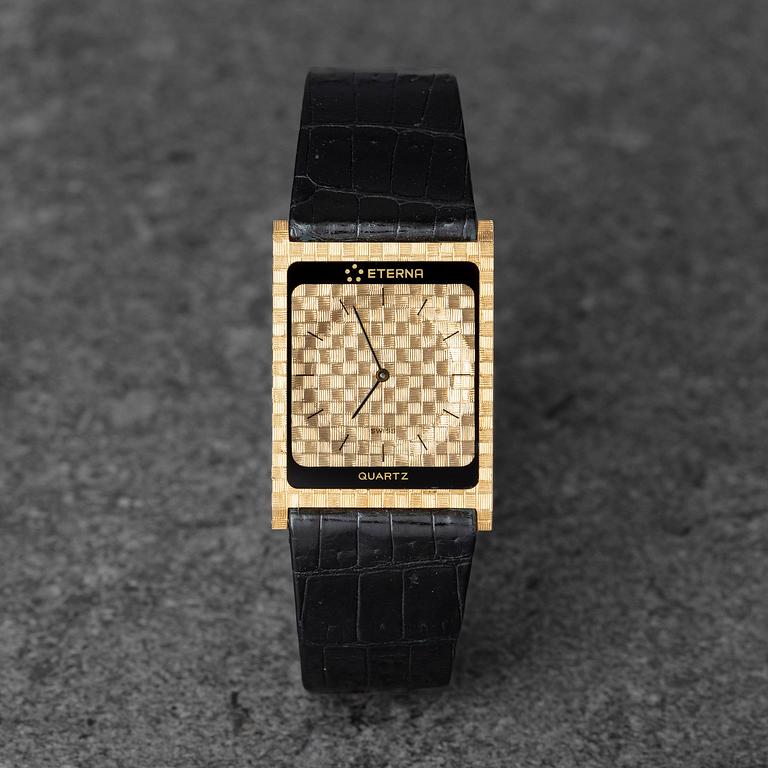Eterna, Delirium Très Mince, ca 1979
Case size: 25 x 30 mm
Material: 18K gold
Movement: quartz, caliber ETA 999
Year: circa 1979
Crystal: sapphire crystal
Bracelet: leather strap, original buckle in 18K gold
Reference number: 795 9623 68
Case number: 732
The general impression is very good, with stickers. Not function tested.
The movement is not running at the time of cataloguing, Bukowskis does not guarantee the future function of the movement. Please note that the movement has not been tested for timekeeping accuracy and may need a service at the buyer's expense. Watches have been opened to examine movements therefore no warranties are made that the watches are water-resistant. Potential buyers should inspect each watch to satisfy themselves as to condition. For more information, please read our Conditions of Purchase.
Muut tiedot
The Eterna “Delirium” represents a milestone in the history of watchmaking. In this first model, the case itself served as the main plate for the groundbreaking ETA 999 movement - making it the thinnest watch in the world at the time.
Introduced in 1979, the Delirium was the pinnacle of miniaturization and one of the most prestigious and expensive watches of the early 1980s. With a retail price of around CHF 20,000, it was positioned at the very cutting edge of technology: super-precise, ultra-thin, and entirely hand-engraved by the master case-makers at Favre & Perret. The same workshop responsible for iconic Patek Philippe models such as the Nautilus reference 3700.
Its rarity is explained by both the short production period and its extremely high price point, which limited sales. Shortly after its release, the Delirium was replaced by the Delirium II, and only a very small number of examples of the first series are believed to exist today.
Powered by the ETA caliber 999, paired with the ultra-thin Renata 333 battery and set via a discreet button on the caseback, the Delirium was Switzerland’s direct response to the Japanese world record in ultra-thin quartz watches. Marketed under the name Delirium Très Mince (“extremely thin”), this model remains one of the most important and elusive innovations of its era.













































